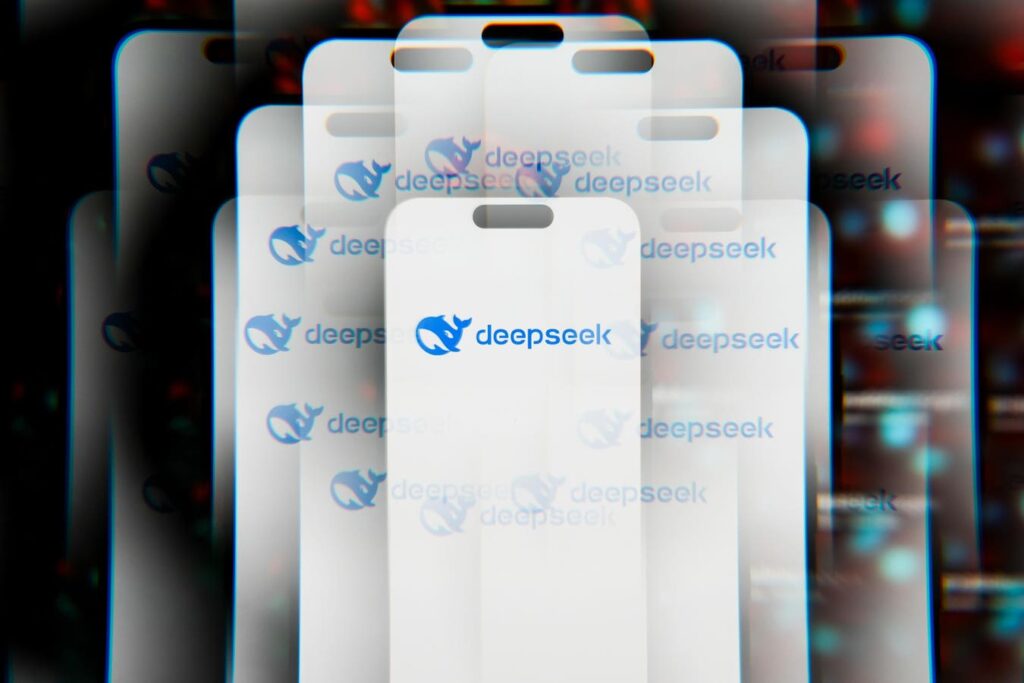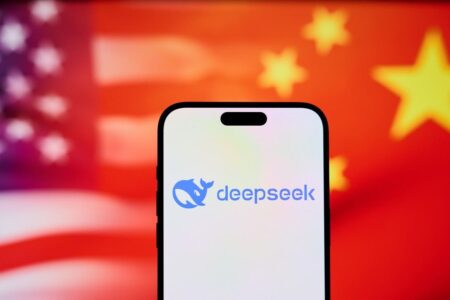For a slew of AI chip companies chomping to dethrone Nvidia, DeepSeek is the opening they’ve been waiting for.
By Richard Nieva, Forbes Staff
A day after Chinese upstart DeepSeek wiped more than a staggering $800 billion from the market caps of America’s AI chip juggernauts, you’d think that Andrew Feldman, CEO of next-gen chip company Cerebras, would be locked in a humid war room plotting how to save his company. Instead, he’s celebrating.
“We’re sort of rejoicing,” he told Forbes. “These are great days. We can’t answer the phones fast enough right now.”
It sounds counterintuitive for an AI chip startup, but Feldman says his company, which is expected to go public later this year, has experienced a jolt of interest since DeepSeek has upended the general convention in Silicon Valley that more chips and bigger budgets equal better AI. After DeepSeek released two open source models in the last few weeks that were nearly as good as the best American tech — but were far less expensive to train and run, causing widespread panic over America’s AI supremacy — he’s betting that usage of AI will explode.
“Each time we made compute more performant and made it lower cost, the market got bigger, not smaller,” Feldman said. “Every single time.”
He’s so bullish because Cerebras, currently valued at $4 billion, builds chips designed specifically to make it more efficient to use AI. This process is called “inference” — basically, the act of running an AI model and allowing it to “think” and reason like a human, as opposed to the work of feeding data into the model to teach it how to do that thinking to begin with. Inference is what happens every time you ask ChatGPT to write an email or work through a coding problem.
And when it comes to inference, Nvidia’s stranglehold is less severe, which has allowed a number of smaller startups to sprout. Cerebras’ peers across the startup chip industry told Forbes they are equally excited for the shift DeepSeek has sparked. “DeepSeek flipped the AI script for open source and inference,” said Rodrigo Liang, CEO of $5.1 billion SambaNova. Sunny Madra, COO of $2.8 billion Groq, told Forbes it’s seen a spike in signups and usage for its chips after adding DeepSeek’s R1 model to its GroqCloud platform, where it rents out access to its computing power. “It’s really good for folks that are focused on inference,” he said. “It’s a long-time-coming reaction to inference becoming much more important than training,” said Robert Wachen, cofounder of Etched, an earlier stage company that raised a $120 million Series A in June.
DeepSeek’s claims — that it trained V3, a 671 billion parameter language model released in late December, in two months for just $5.58 million, orders of magnitudes less than the $100 million OpenAI spent on its (albeit larger) GPT-4 model — are being hotly disputed. Many in the industry believe DeepSeek used more money and compute power than the company let on, with Scale CEO Alexandr Wang claiming the company possessed around 50,000 H100s, state-of-the-art Nvidia chips banned in China. But the reverse sticker shock has impressed American rivals regardless. “We don’t know if it was $6 million or $60 million, but it wasn’t $600 million,” said SambaNova’s Liang.
DeepSeek showed not only that you could train a model more cheaply, but that investing more in inference would produce better results. Last week, DeepSeek open sourced R1, a reasoning model similar to OpenAI’s o1 model but that’s free to use (while OpenAI charges $200 per month). And R1, like all reasoning models, uses more inference power as it “thinks” through the multiple steps of queries. More inference-intensive models, combined with more people using AI because it’s cheaper, is welcome news for Cerebras and its ilk.
The reaction is a self-serving one for this cadre of companies vying to dethrone Nvidia, now worth $2.93 trillion even after a 17% market drop on Monday that wiped out nearly $600 billion in value. The dive was “a judgment on the fact that most of Nvidia’s business was tied to these large companies buying lots of racks of GPUs for pre-training” — not for inference, said Liang.
But CEO Jensen Huang is a formidable competitor. He’s been drumming up the company’s inference prowess for months, and the chip startups all told Forbes that Nvidia’s stock plunge was an overreaction. After the stock drop, the company responded with a statement touting its own inference capabilities. “Inference requires significant numbers of Nvidia GPUs and high-performance networking,” the company said in a statement to Forbes.
Meanwhile, the big AI frontier labs, like OpenAI, Anthropic, or Google DeepMind, which have spent billions on Nvidia’s GPUs, haven’t wasted their money. DeepSeek showed the industry how to optimize beyond what had been done before, and that just means bigger, better AI for everyone. “If you have a more efficient training process, then you take the same compute and train a bigger model,” said Evan Conrad, cofounder of GPU marketplace San Francisco Compute Company, told Forbes.
Aside from technical feats that Silicon Valley will surely emulate, DeepSeek’s success had other resonance for the smaller chip companies in the shadow of Nvidia. “For those of us who are underdogs, it ought to fire you up,” said Feldman.
Read the full article here

















